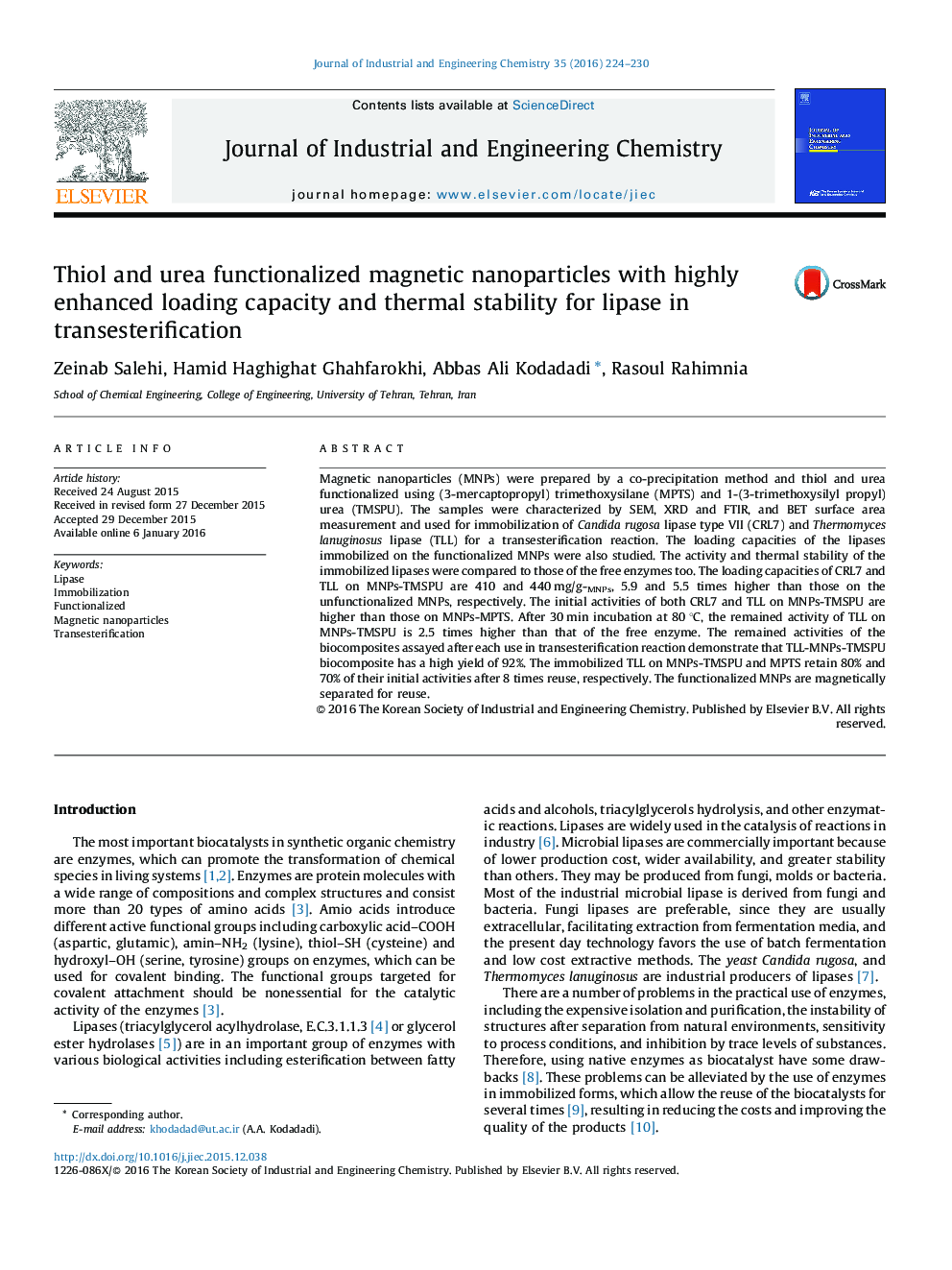| Article ID | Journal | Published Year | Pages | File Type |
|---|---|---|---|---|
| 227947 | Journal of Industrial and Engineering Chemistry | 2016 | 7 Pages |
Magnetic nanoparticles (MNPs) were prepared by a co-precipitation method and thiol and urea functionalized using (3-mercaptopropyl) trimethoxysilane (MPTS) and 1-(3-trimethoxysilyl propyl) urea (TMSPU). The samples were characterized by SEM, XRD and FTIR, and BET surface area measurement and used for immobilization of Candida rugosa lipase type VII (CRL7) and Thermomyces lanuginosus lipase (TLL) for a transesterification reaction. The loading capacities of the lipases immobilized on the functionalized MNPs were also studied. The activity and thermal stability of the immobilized lipases were compared to those of the free enzymes too. The loading capacities of CRL7 and TLL on MNPs-TMSPU are 410 and 440 mg/g-MNPs, 5.9 and 5.5 times higher than those on the unfunctionalized MNPs, respectively. The initial activities of both CRL7 and TLL on MNPs-TMSPU are higher than those on MNPs-MPTS. After 30 min incubation at 80 °C, the remained activity of TLL on MNPs-TMSPU is 2.5 times higher than that of the free enzyme. The remained activities of the biocomposites assayed after each use in transesterification reaction demonstrate that TLL-MNPs-TMSPU biocomposite has a high yield of 92%. The immobilized TLL on MNPs-TMSPU and MPTS retain 80% and 70% of their initial activities after 8 times reuse, respectively. The functionalized MNPs are magnetically separated for reuse.
Graphical abstractFigure optionsDownload full-size imageDownload as PowerPoint slide
